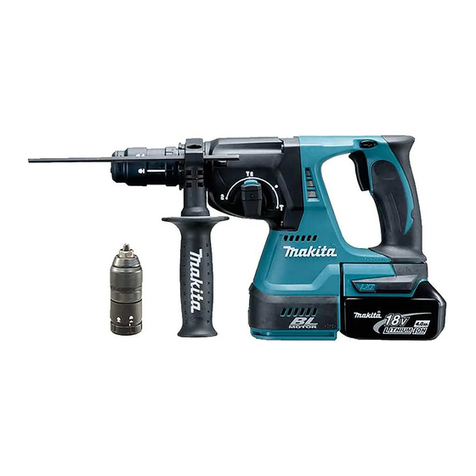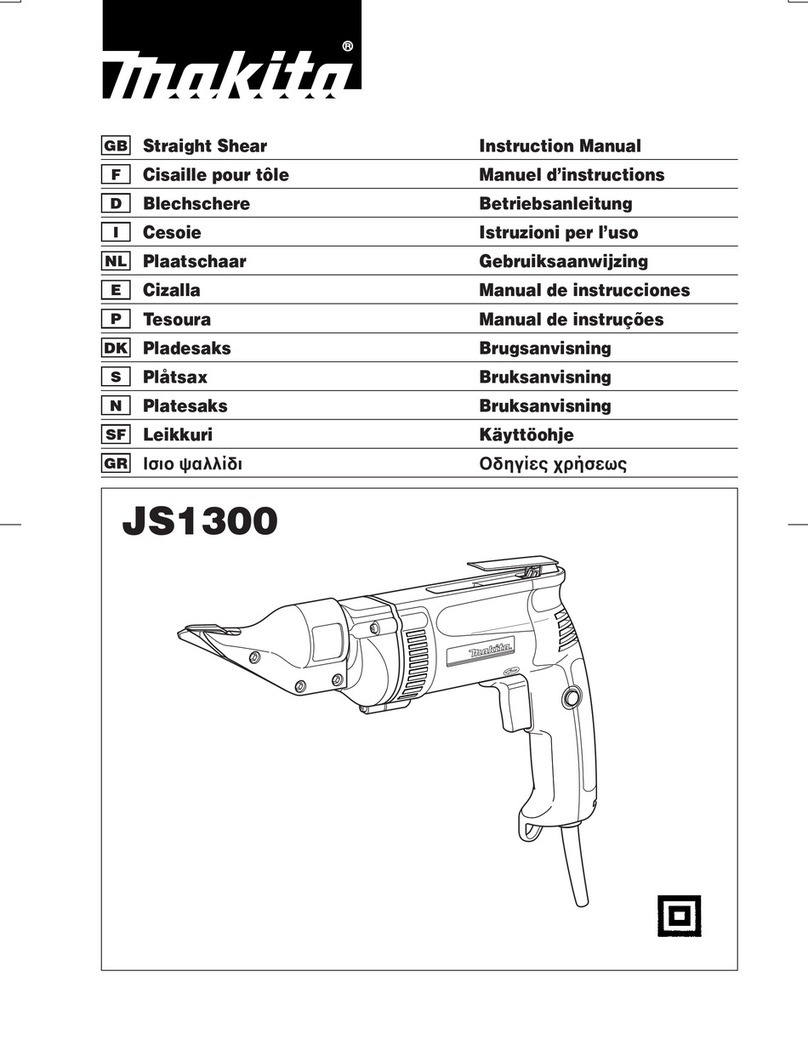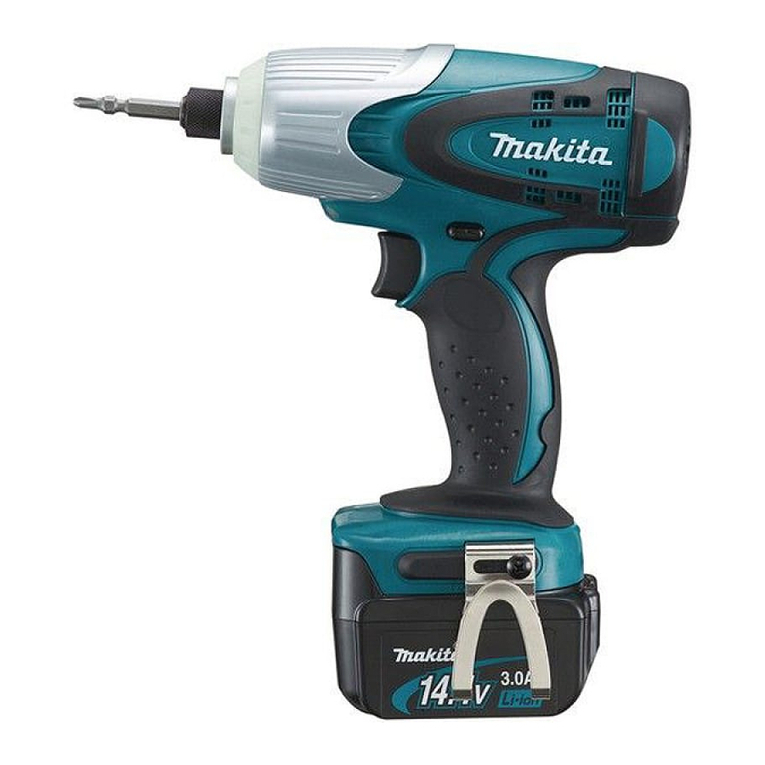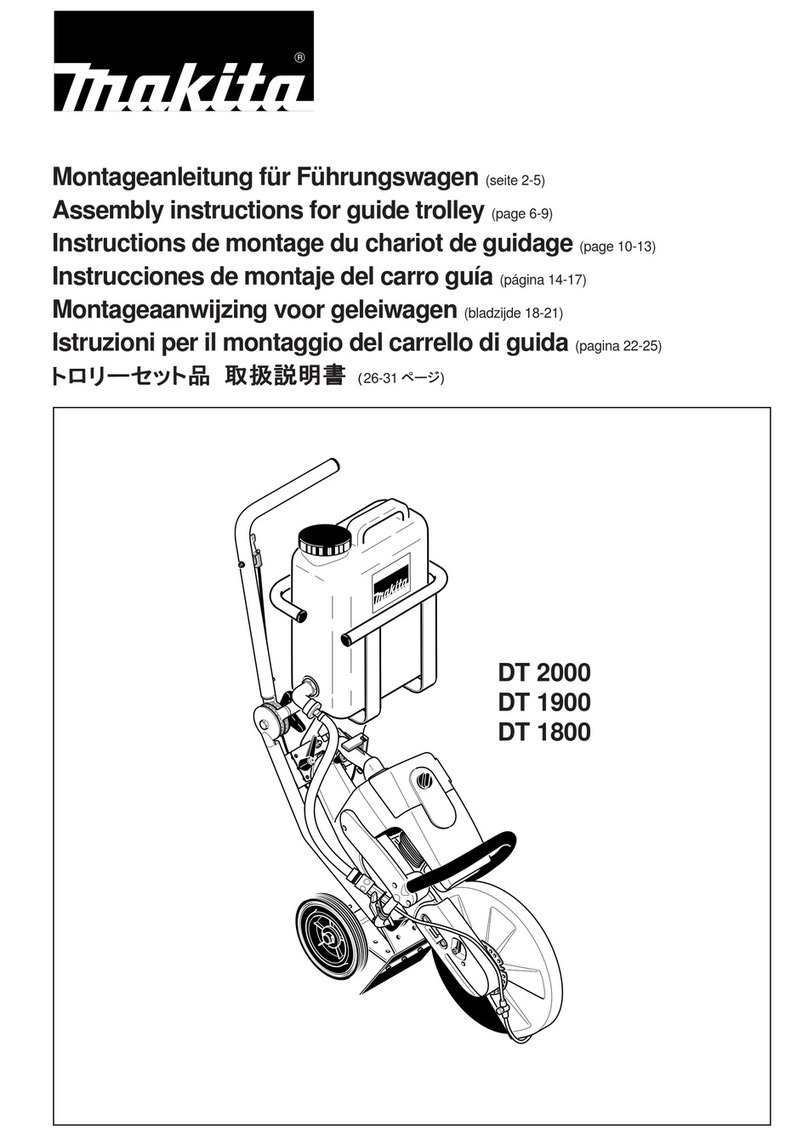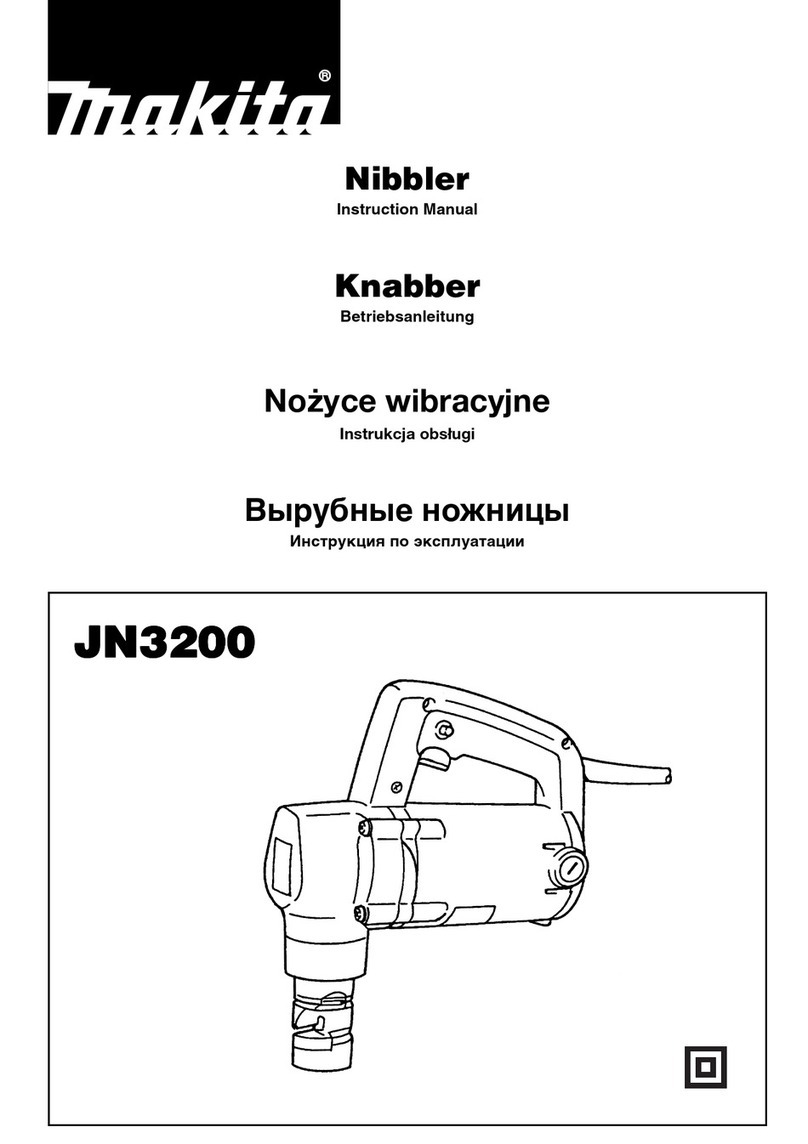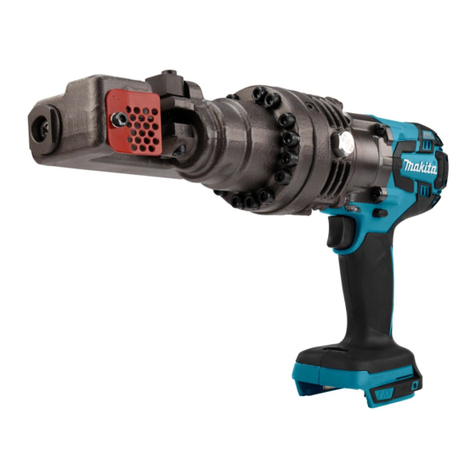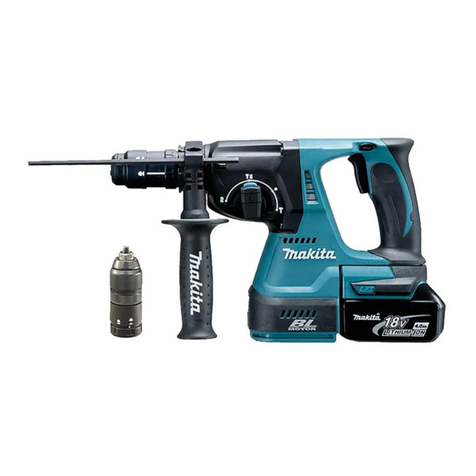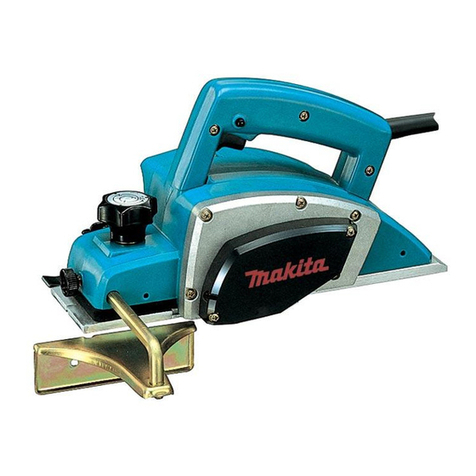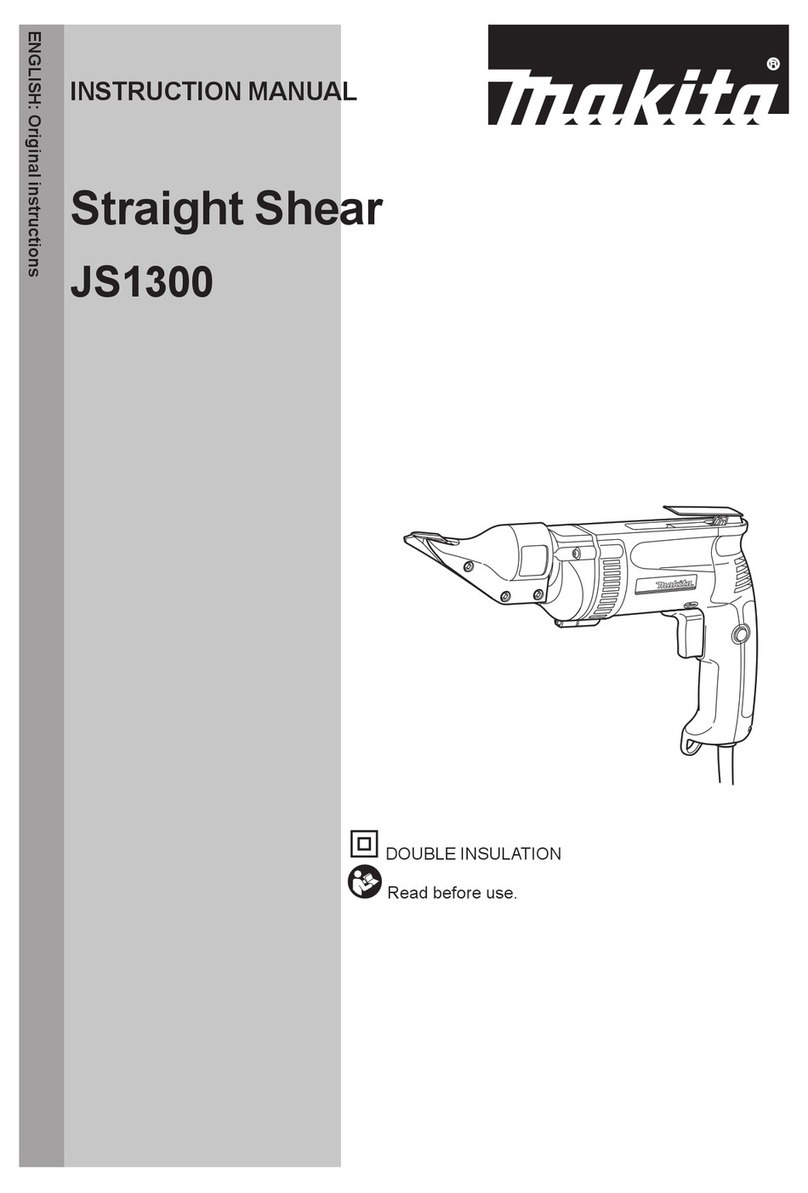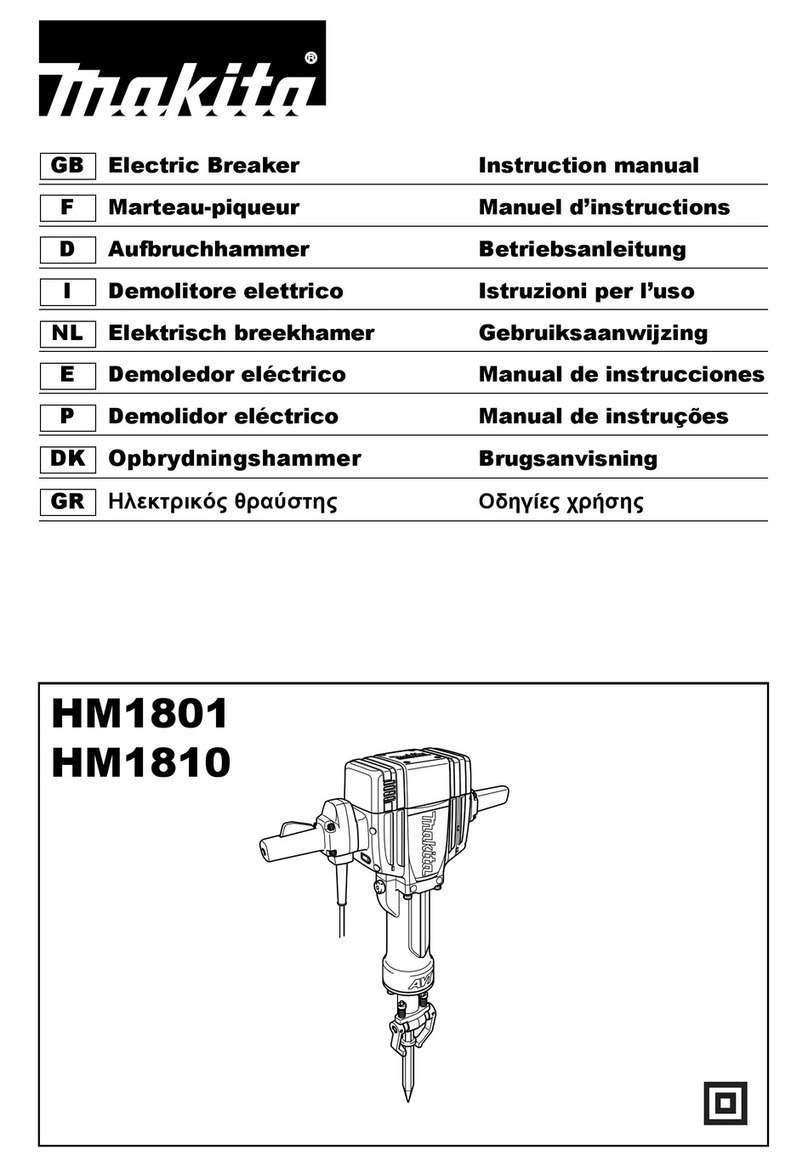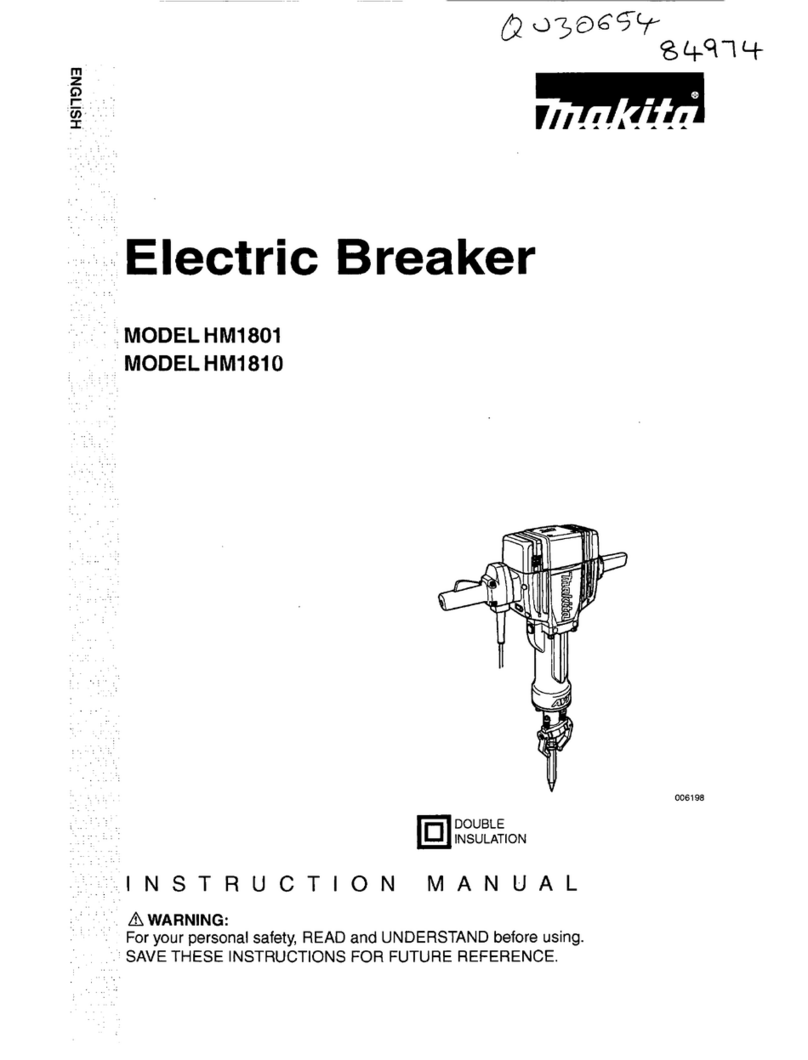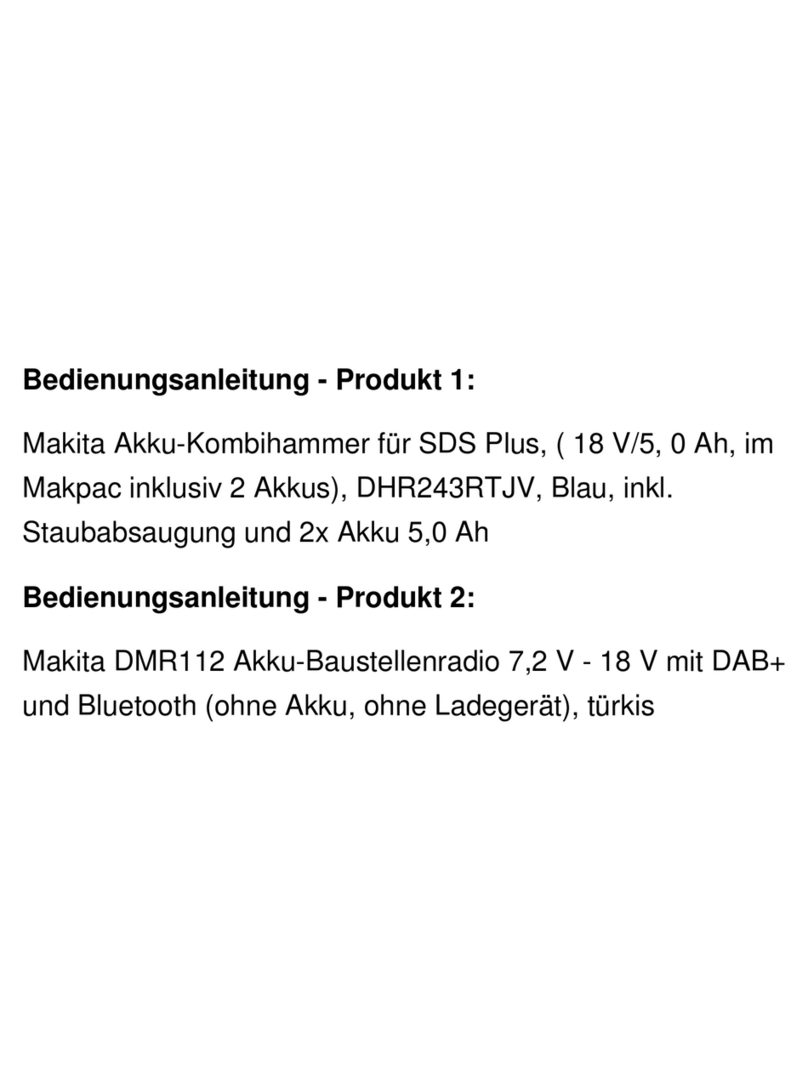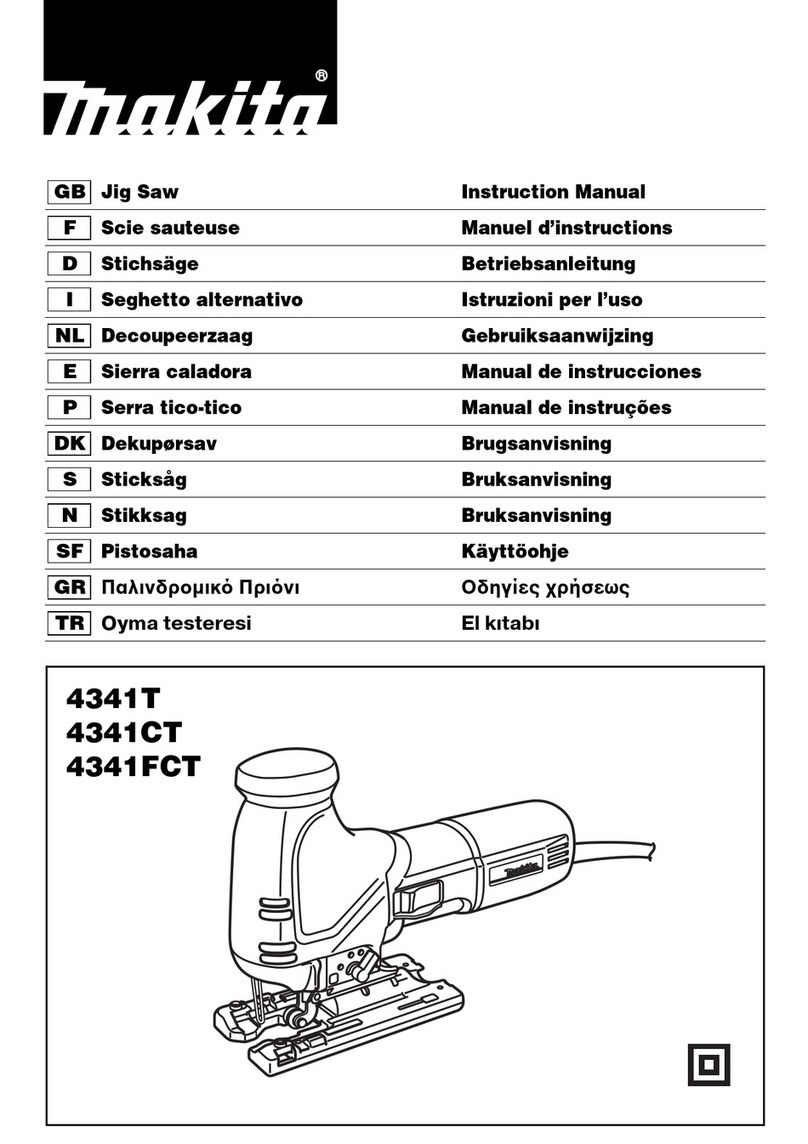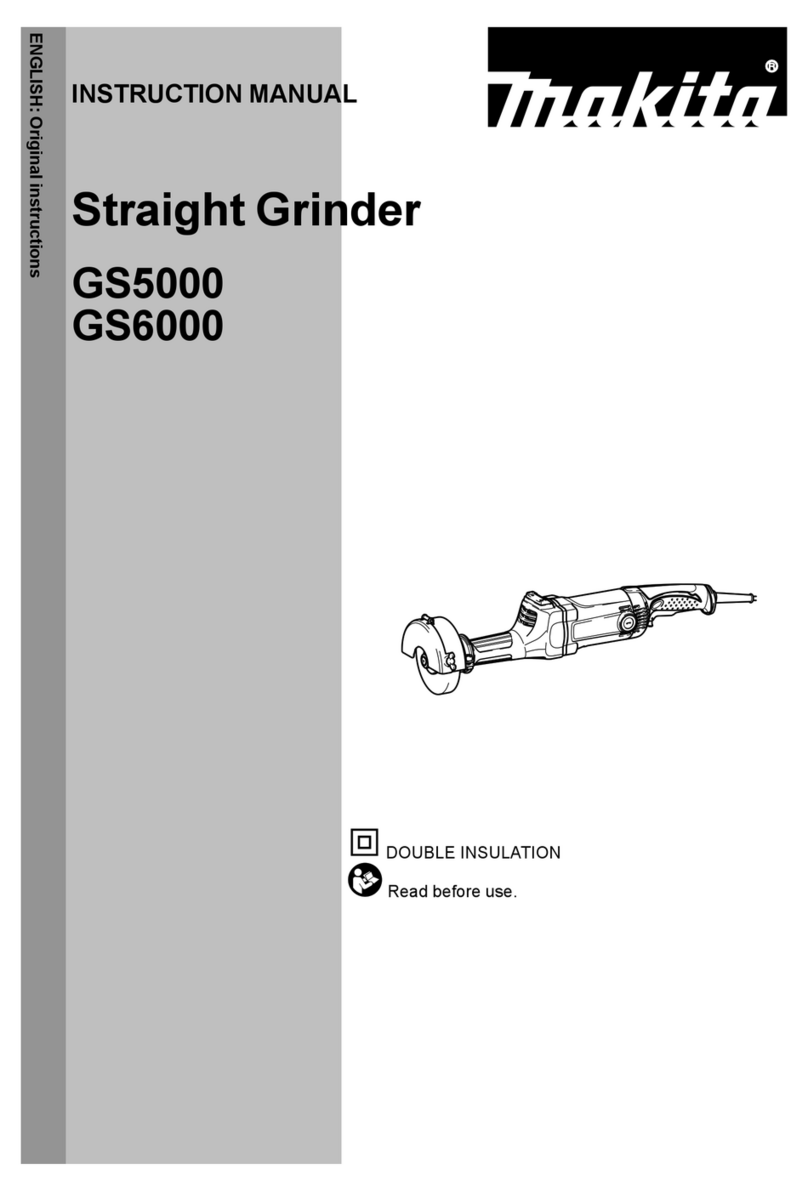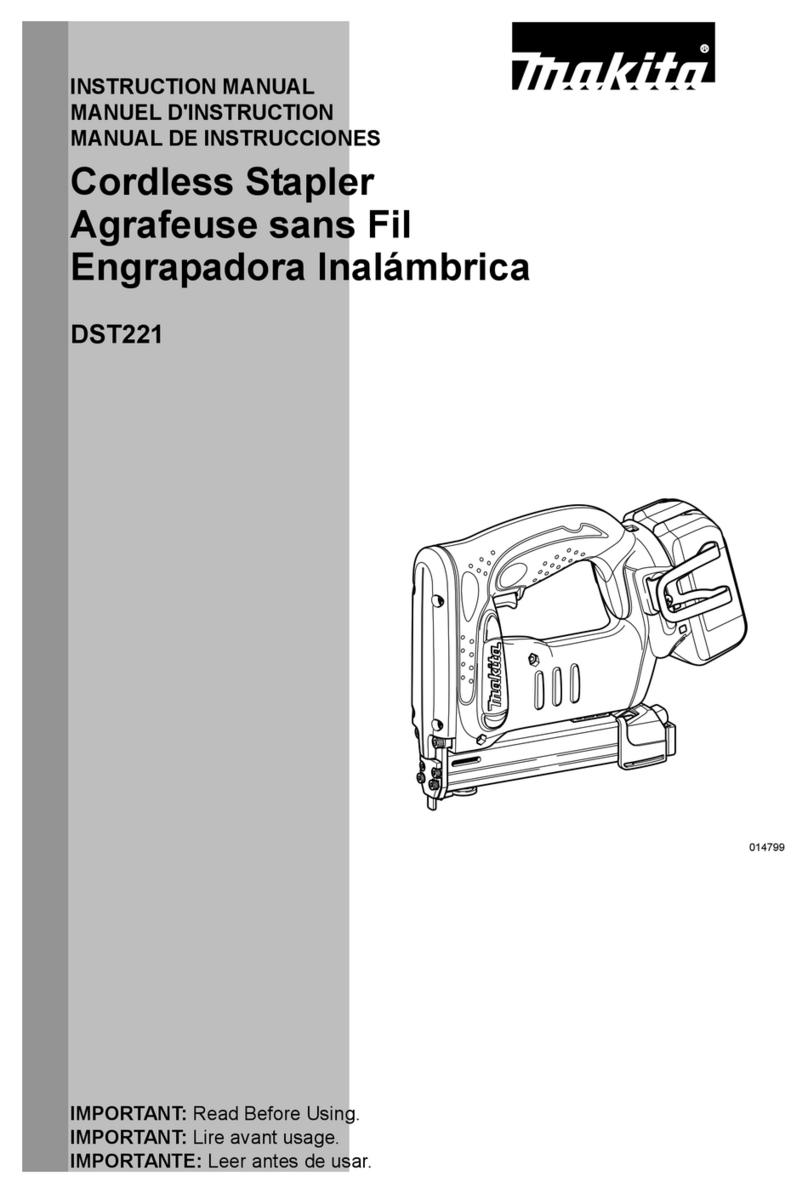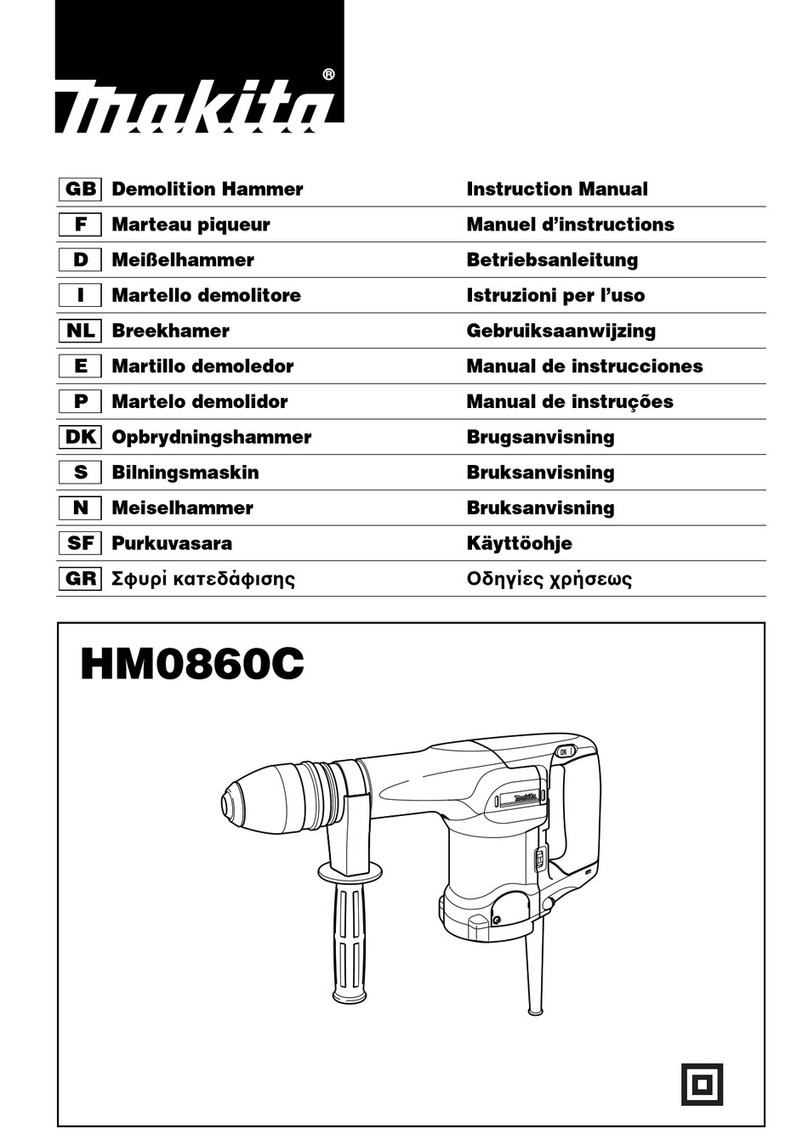
9
Dust extraction
The dust nozzle (accessory) is recommended to perform
clean cutting operations.
To attach the dust nozzle on the tool, insert the hook of
dust nozzle into the hole in the base. (Fig. 16 & 17)
The dust nozzle can be installed on either left or right
side of the base.
Then connect a Makita vacuum cleaner to the dust noz-
zle. (Fig. 18)
CAUTION:
• If you try to remove the dust nozzle forcibly, the hook of
the dust nozzle can be diminished and removed unin-
tentionally during operation.
Rip fence set (optional accessory)
CAUTION:
• Always be sure that the tool is switched off and
unplugged before installing or removing accessories.
1. Straight cuts (Fig. 19 & 20)
When repeatedly cutting widths of 160 mm or less,
use of the rip fence will assure fast, clean, straight
cuts. To install, insert the rip fence into the rectangular
hole on the side of the tool base with the fence guide
facing down. Slide the rip fence to the desired cutting
width position, then tighten the bolt to secure it.
2. Circular cuts (Fig. 21 & 22)
When cutting circles or arcs of 170 mm or less in
radius, install the rip fence as follows.
Insert the rip fence into the rectangular hole on the
side of the base with the fence guide facing up. Insert
the circular guide pin through either of the two holes
on the fence guide. Screw the threaded knob onto the
pin to secure the pin.
Now slide the rip fence to the desired cutting radius,
and tighten the bolt to secure it in place. Then move
the base all the way forward.
NOTE:
• Always use blades No. B-17, B-18, B-26 or B-27
when cutting circles or arcs.
Guide rail adapter set (accessory)
When cutting parallel and uniform width or cutting
straight, the use of the guide rail and the guide rail
adapter will assure the production of fast and clean cuts.
(Fig. 23)
To install the guide rail adapter, insert the rule bar into the
square hole of the base as far as it goes. Secure the bolt
with the hex wrench securely. (Fig. 24)
Install the guide rail adapter on the rail of the guide rail.
Insert the rule bar into the square hole of the guide rail
adapter. Put the base to the side of the guide rail, and
secure the bolt securely. (Fig. 25)
CAUTION:
• Always use blades No. B-8, B-13, B-16, B-17 or 58
when using the guide rail and the guide rail adapter.
Cover plate (Fig. 26)
Use the cover plate when cutting decorative veneers,
plastics, etc. It protects sensitive or delicate surfaces
from damage. Fit it on the back of the tool base.
Anti-splintering device (Fig. 27)
For splinter-free cuts, the anti-splintering device can be
used. To install the anti-splintering device, move the tool
base all the way forward and fit it from the back of tool
base. When you use the cover plate, install the anti-splin-
tering device onto the cover plate.
CAUTION:
• The anti-splintering device cannot be used when mak-
ing bevel cuts.
MAINTENANCE
CAUTION:
• Always be sure that the tool is switched off and
unplugged before attempting to perform inspection or
maintenance.
• Never use gasoline, benzine, thinner, alcohol or the
like. Discoloration, deformation or cracks may result.
To maintain product SAFETY and RELIABILITY, repairs,
carbon brush inspection and replacement, any other
maintenance or adjustment should be performed by
Makita Authorized Service Centers, always using Makita
replacement parts.
OPTIONAL ACCESSORIES
CAUTION:
• These accessories or attachments are recommended
for use with your Makita tool specified in this manual.
The use of any other accessories or attachments might
present a risk of injury to persons. Only use accessory
or attachment for its stated purpose.
If you need any assistance for more details regarding
these accessories, ask your local Makita Service Center.
• Jig saw blades
• Hex wrench 4
• Rip fence (guide rule) set
• Guide rail adapter set
• Guide rail set
• Anti-splintering device
•Dustnozzle
• Cover plate
• Hose (For vacuum cleaner)
NOTE:
• Some items in the list may be included in the tool pack-
age as standard accessories. They may differ from
country to country.
